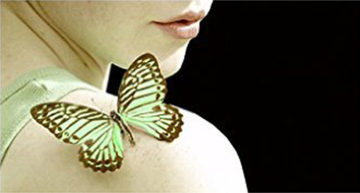
When I was in college and first realized I might be gay, I was terrified. I pictured living in a remote cabin with a dog, the better to avoid the rejection of a society where I didn’t feel I could ever belong. My shame—my wish to flee instead of to confront the world as myself—only compounded my feeling of inadequacy: Not only might I be gay, it seemed I was also a coward. I wished for equal dignity, but I didn’t know how to summon it.
Eventually, joining the gay rights movement would offer a way to replace feelings of unworthiness with feelings of pride. Equality was an option that needed only to be seized, in concert with a growing movement that stressed awareness, activism, and perseverance.
This common, if not universal, path to LGBTQ activism—this mix of unworthiness and defiance channeled into something constructive—is perhaps more central than any other narrative in explaining Friday’s 5-4 Supreme Court ruling, in Obergefell v. Hodges, that no American can be denied the freedom to marry because of their sexual orientation.
Awareness, activism, and perseverance—Justice Anthony Kennedy’s opinion (and many of his prior opinions trumpeting the dignity of LGBTQ people) reflects the importance of all three. Reaching back to World War II, he cited a “greater awareness of the humanity and integrity of homosexual persons,” whose claims to equal dignity nevertheless bumped up against continued persecution and denigration in law and behavior. This awakening to gay equality had to come, first of all, among gay people themselves, as little advancement was possible before we came to see ourselves as members of a legitimate minority rather than isolated degenerates, as fully worthy of equality despite, or even because of, our difference.
Some pioneering activists seem to have carried this inner certainty from birth. “I am right, and they are wrong,” Franklin Kameny once said of his opponents, “and if they won’t change, I will have to make them.” Kameny was an astronomer who sued after he was fired from his job at the U.S. Army Map Service in 1957 for being gay. He lost, but he was one of the first Americans to recognize that the Constitution ought to apply to gay people, a notion that seemed to come from a preternatural conviction that “gay is good,” and not something that should be shamefully hidden from the world.
Others fought valiantly for equality despite being unable to rid themselves of their own self-hatred. Another of the earliest gay advocates, Edward Sagarin, who published the groundbreaking book The Homosexual in America in 1951, under the pseudonym Donald Webster Cory, lived in the closet, married to a woman. He recalled feeling “deeply ashamed of being abnormal” even as he worked out, in print, his growing awareness that there was nothing wrong with being gay and laid out one of the first manifestoes demanding equal treatment from society.
These early activists were not, for the most part, fighting for the freedom to marry. But as today’s court opinion reminds us, the marriage victory is indebted to efforts, like these, that began long ago, and that slowly, persistently, chipped away at the anti-gay attitudes that kept LGBTQ people unequal. Our nation,” wrote Kennedy, is one “where new dimensions of freedom become apparent to new generations, often through perspectives that begin in pleas or protests and then are considered in the political sphere and the judicial process.” Kennedy is highly attuned to history, as evidenced by his piercing questions during oral arguments in April about the rationale for altering an understanding of marriage that’s “been with us for millennia.” And one of the most important laws of history is that it unfolds with unintended consequences.
Indeed, many early LGBTQ activists, including major movement organizations and even many current leaders of the movement, did not initially believe that marriage equality was a worthy goal to prioritize. The reasons were many: a countercultural critique of marriage as oppressive, a preference for pushing for alternative forms of family life that became popular starting in the 1960s, and the strategic sense that, in an era when homosexuality was still considered criminal in dozens of states and the Supreme Court dismissed claims to equal dignity as “facetious,” waltzing into a court demanding marriage was nothing less than crazy.
But another force was at play: The failure among many LGBTQ Americans to believe that they were worthy of marriage equality. “There were a lot of people who didn’t even dare to think about it,” Mary Bonauto, who argued the Obergefell case before the Supreme Court, told me in an interview for a book I’m writing on marriage equality. They put the concept of marriage equality out of their minds because they couldn’t conceive of achieving it (or thought they didn’t need it). But Bonauto says that after she successfully argued the case that won marriage equality in Massachusetts, she was stunned by how many LGBTQ folks who had once dismissed marriage as not for them came around. “They said, ‘I never thought this could matter to me so much.’ ” Bonauto says it was “just shocking to me how much people had cut off of themselves and how being able to marry”—and finally marrying—“was transformative.” All this happened after Bonauto spent years trying to dissuade people from bringing a premature lawsuit that might set the movement back by establishing a bad precedent.
Partly because of the vocal resistance of parts of the LGBTQ movement to pushing forward with marriage, some gay and lesbian advocates began complaining that the established movement was too slow and timid in fighting for marriage equality. This was a sentiment that reached its apex in a controversial and credulous 2014 book by New York Times reporter Jo Becker. The book cast established movement figures like Evan Wolfson, founder of the group Freedom to Marry, as an ornery roadblock to progress and depicted straight conservative superlawyer Ted Olson as the movement’s savior for filing a federal right-to-marry lawsuit in 2009, challenging California’s same-sex marriage ban. While LGBTQ movement groups warned the suit was rushed, Olson hoped his case would establish a federal right to marry at the Supreme Court. Movement groups were largely vindicated when the Supreme Court sidestepped the claim on procedural grounds, though the suit did secure marriage equality in California.
Friday’s decision, which did what Olson had hoped to do two years ago, makes clear why the movement strategy of incremental change—overseen by the tenacious, laser-focused Wolfson at Freedom to Marry, was exactly right. Indeed, those decades of agitating for acceptance of LGBTQ people were critical in allowing our country to reach this day, as Kennedy makes clear in a detailed summary of both the social and legal history that enabled his ruling. The reason movement activists like Bonauto and Wolfson had counseled patience before bringing marriage equality lawsuits is that their careful study of history, particularly of the black civil rights movement, showed that the courts were consistently reluctant to get ahead of the culture. When the Supreme Court struck down bans on interracial marriage, a majority of states had already done so, but when Olson brought his suit in 2009, only three states had marriage equality. It was always unlikely that the Supreme Court would force the other 47 to get in line.
Kennedy’s opinion today makes clear just how important decades of social change on LGBTQ rights were to reaching this decision. Many Americans, he noted, still feel that there has been “insufficient democratic discourse” to decide this issue with finality. They wish to “proceed with caution” and “await further legislation, litigation, and debate.” Yet Kennedy’s retort is powerful. In response to the charge by anti-gay activists that this debate has moved too quickly, he noted the long history of the marriage equality debate, referencing “referenda, legislative debates, and grassroots campaigns, as well as countless studies, papers, books, and other popular and scholarly writings.” The arguments in court, he wrote, “reflect the more general, societal discussion of same-sex marriage and its meaning that has occurred over the past decades.” More than 100 friend-of-the-court briefs reveal the “substantial attention” and “enhanced understanding” this issue has garnered in the public consciousness over time. He also pointed to “numerous cases about same-sex marriage [that] have reached the United States Courts of Appeals in recent years.” Many different courts, he noted, have now “written a substantial body of law considering all sides of these issues. That case law helps to explain and formulate the underlying principles this Court now must consider.”
In other words, the work of LGBTQ people over generations, stretching from Kameny and Sagarin to Andrew Sullivan making the conservative case for marriage equality to Bonauto and Wolfson and beyond, has been critical in bringing America to this day. What’s also undoubtedly true is that the work has often come from the grassroots, from actors outside the mainstream gay movement who simply wanted to wed. It came from tens of thousands of ordinary gay people and couples who insisted on their equal dignity either before others recognized it (hundreds of couples exchanged vows—and some brought the earliest lawsuits—starting in the 1970s), or as a result of enjoying their own awakening to consciousness. From the early Hawaii lawsuit onward, the organized gay movement resisted court cases with the very best of intentions, only to find that those cases thrust the marriage equality movement forward. While the strategic prowess of the organized LGBTQ movement has been instrumental, the movement was not able, ultimately, to retain control over an effort with a million heads. And similarly, ordinary gays and lesbians often argued for forms of equality they thought were preferable to same-sex marriage, only to find they inadvertently pushed marriage forward. History is a long road, with unintended consequences. Today, however, we recognize that amid the diversity of opinion and multitude of contributions from within and outside the LGBTQ movement, equality has always been at its root.
And so today, thanks to the persistent work of LGBTQ activists, millions of open-hearted straight Americans, and the U.S. Constitution, I do not live in a remote cabin with a dog, but on a lovely corner house with my wonderful husband (and dog). And I live with a hope fulfilled, one shared by gays, lesbians, and bisexuals everywhere: “Their hope,” writes Kennedy in his concluding passage about same-sex couples wishing to wed, “is not to be condemned to live in loneliness, excluded from one of civilization’s oldest institutions. They ask for equal dignity in the eyes of the law. The Constitution grants them that right.” And I am thankful.
Today, in emotional remarks made just hours after the ruling came down, President Barack Obama said, “slow, steady effort is rewarded with justice that arrives like a thunderbolt.” He attributed the victory to “the countless small acts of courage of millions of people across decades who stood up” and “came out,” who “stayed strong, and came to believe in themselves and who they were. And slowly made an entire country realize that love is love.” Maybe, ultimately, I wasn’t a coward after all.
Want to hang out with Outward? If you’ll be in or near New York City on Monday, July 13, join June Thomas, J. Bryan Lowder, and Mark Joseph Stern—and special guests Ted Allen, of Queer Eye and Chopped fame, and marriage equality campaigner extraordinaire Evan Wolfson—for a queer kiki at an Outward LIVE show, hosted by City Winery. Details and tickets can be found here.
Nathaniel Frank, director of the What We Know Project at Columbia Law School, is writing a book on the history of marriage equality, due out in 2016.
















